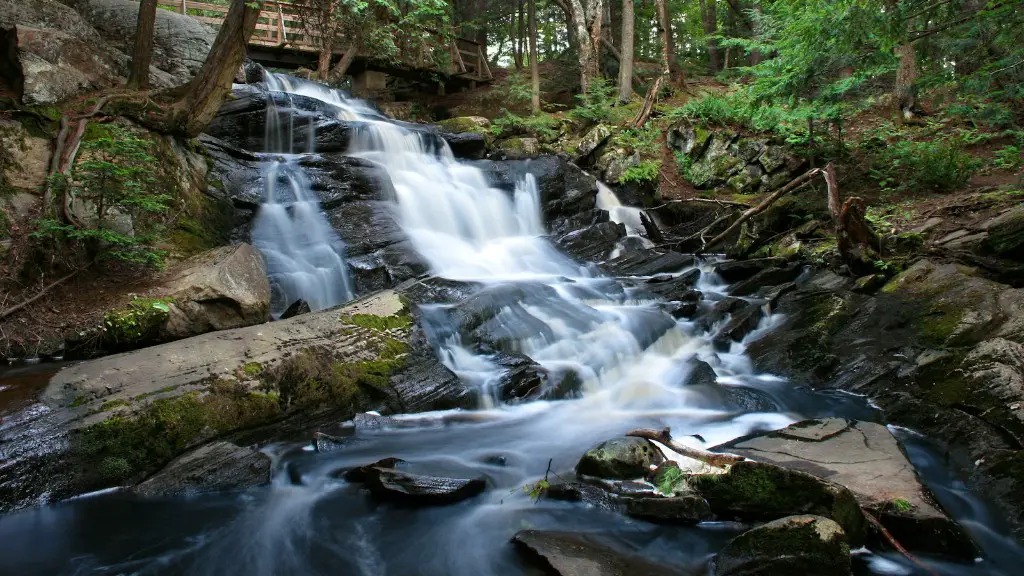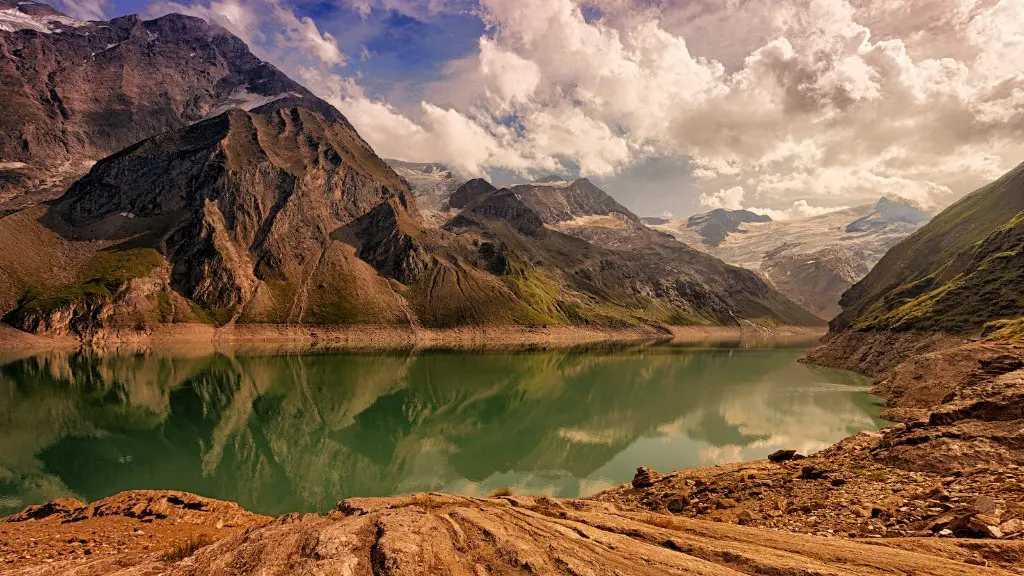The Great Mississippi River
The Mississippi River is an iconic river that runs through the Midwest of the United States, connecting millions of people and places. Its path, marked by deep, twisting valleys and expansive floodplains, has seen centuries of human history and is home to many animal and plant species. Its water ways have been used for transportation, food, commerce, and recreation since the Native American cultures and early European explorers. As a result, the Mississippi River has served as one of the most important rivers in American history.
The headwaters of the Mississippi originate near Lake Itasca to the north and is approximately 2,320 miles long in total. It travels through a total of 10 states, including Minnesota, Wisconsin, Illinois, Iowa, Missouri, Kentucky, Tennessee, Arkansas, Mississippi, and Louisiana. Along the way, the Mississippi River winds through some of the most beautiful landscapes, from the enormous swamps of the Delta region to the countless secluded bays of the Upper River.
Historical Path of the Mississippi River
The historical path of the Mississippi River has had native peoples living along its banks and interacting with its waters for over 12,000 years. Native American tribes such as the Sioux, Winnebago, Ojibwa, Fox, and Ioway have used the waters of the Mississippi River for transportation, fishing and trading. The Mississippi was also a major artery of goods, goods and ideas between Eastern Woodlands and the Great Plains, thus playing a major role in the formation of the tribes that eventually formed the United States.
In 1673, the first Europeans to explore the Mississippi were French explorers, Pierre-Esprit Radisson and Medard des Groseilliers. This marked the beginning of a centuries-long French exploration of the region. In 1682, the French built Fort Crèvecoeur to serve as the center of their explorations and trading activities along the Mississippi.
The French not only used the Mississippi River as a main artery of trading, but also as a highway for settlement. Establishing large trading posts and forts along the river, these French outposts served as a sort of “gateway” to the Upper Mississippi River. From here, the French colonials expanded westward, establishing trading foundations in Louisiana and along various tributaries of the Mississippi en route.
The Mississippi River In American History
The importance of the Mississippi River for the colonial powers pushed two colonial giants, France and Spain, into an intense rivalry for control of the region. This rivalry continued until April 30th, 1803 when France sold the Louisiana Territory, which includes the entire Mississippi River, to the United States. The purchase doubled the size of the United States and secured its control of the entire Mississippi River’s length.
In American history, the Mississippi River quickly became an integral part of the economy and transportation system of the country. Steamboats and barges traveled the length of the river, transporting goods, people and ideasfrom one end of the country to the other.
The Mississippi River also contributed to the nation’s development in other ways. Its riverside towns and cities became vibrant cultural centers during the 19th century, and the river was a major driver of the country’s industry. Due to this, a number of important monuments were constructed along the river, many of which remain active today, including the Gateway Arch in St. Louis and the Statue of Liberty in New Orleans.
Impacts On Modern Life
Today, the Mississippi River remains an important part of American life, connecting ten states and dozens of cities and towns. Its waters are used for transportation and recreational activities, and it has grown to encompass a variety of businesses such as fishing, farming and tourism.
Today, experts are still confronted with the challenge of balancing the river’s usage and protecting it at the same time. The challenge is to make sure that the river is used responsibly while ensuring that it remains a valuable resource for generations to come. The Mississippi River is, truly, one of the most significant rivers in the history of the United States.
Environmental Impacts
The Mississippi River is one of the most polluted waterways in the United States, with pollutants ranging from fertilizers and pesticides to industrial waste and sediment. Sadly, these pollutants are not only damaging the river, but also the plants and animals that call it home. This is why organizations like the Mississippi River Collaborative and the Mississippi River Network are working to clean up the river, restore its heritage, and conserve its natural resources.
Tackling the environmental impacts of the Mississippi River is an enormous challenge, but progress is being made. The Mississippi River Collaborative has established water quality goals for the river that include restoring fish populations and achieving a healthier, more diverse ecosystem. They have also identified the major sources of pollution and are working towards reducing these so that the health of the river can be improved.
Economic Contributions
The Mississippi River also contributes to our economy in many ways. Its waters are utilized by industries such as farming, fishing, and transportation. In addition, the activities along the Mississippi River have created millions of jobs, boosting the local economies of many cities and towns along its path.
For example, the Mississippi River is an important part the ‘Mississippi Flyway’, a route used by millions of migratory waterfowl, providing tremendous recreational and ecological value. The flyway and its surrounding areas also contribute to the economy through tourism and recreation. Every year, thousands of people visit the region to take in the beauty of the river, go hunting and fishing, and even to study the local wildlife.
Protected Areas
The economic and environmental importance of the Mississippi River is recognized by both the state and federal governments. From the Headwaters at Lake Itasca to the mouth of the river in the Louisiana delta, the US government has established various protected areas along the river. These areas are managed by the US Fish and Wildlife Service and other organizations, who monitor and protect the river’s species, habitats and ecosystems.
In addition, a number of private land owners have vested their property with conservation agreements to protect the resources of the Mississippi River, while also allowing public access. Thanks to these efforts, the Mississippi River will remain a thriving place for generations to come.
International Assistance
The Mississippi River also has international implications. In 1993, the US and Canada signed the Great Lakes/St. Lawrence River Agreement, a treaty that entrusts the two countries with the responsibility of protecting and restoring ecosystems of the entire Great Lakes Basins, including that of the Mississippi.
The Agreement provides guidance on the harmonization of activities impacting the environment, such as developing water resources, protecting water quality, preventing the spread of aquatic invasive species, and conservation of habitats. This kind of international cooperation is an important step in ensuring that the Mississippi River remains a healthy and sustainable river.
Conclusion
The Mississippi River is one of the longest and most important rivers in the United States, and has held a prominent role in the course of American history. Its waters have provided transportation, sustenance and sustenance and recreation for people for centuries, and its economic and environmental impacts are still felt today. By protecting and restoring its resources, the Mississippi River will remain a vibrant and healthy river for many generations to come.




